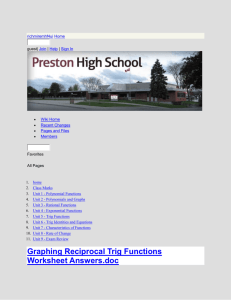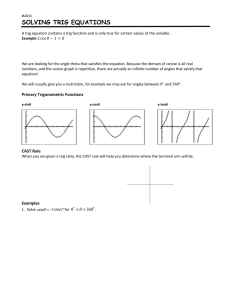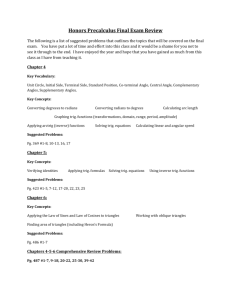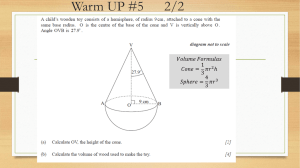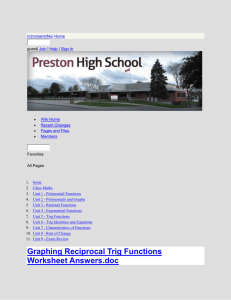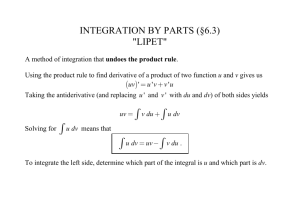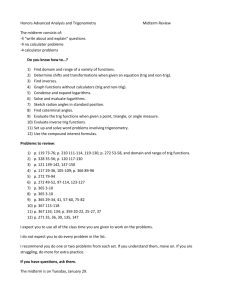1. Chapter 1 • Angles in standard position.
advertisement
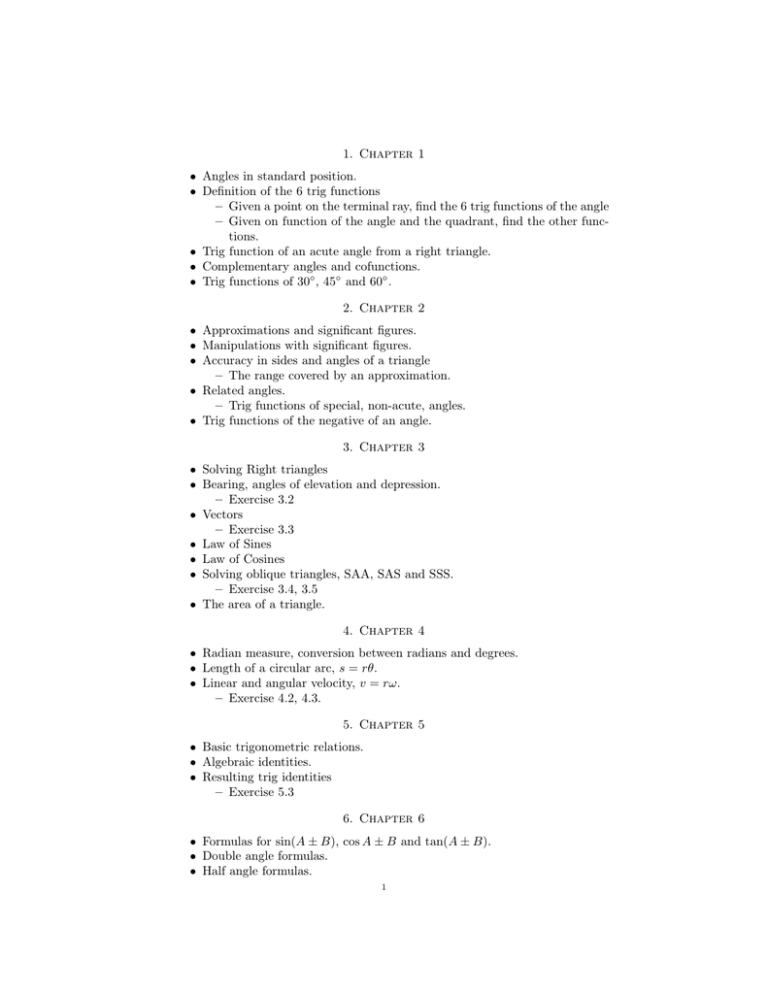
1. Chapter 1 • Angles in standard position. • Definition of the 6 trig functions – Given a point on the terminal ray, find the 6 trig functions of the angle – Given on function of the angle and the quadrant, find the other functions. • Trig function of an acute angle from a right triangle. • Complementary angles and cofunctions. • Trig functions of 30◦ , 45◦ and 60◦ . 2. Chapter 2 • Approximations and significant figures. • Manipulations with significant figures. • Accuracy in sides and angles of a triangle – The range covered by an approximation. • Related angles. – Trig functions of special, non-acute, angles. • Trig functions of the negative of an angle. 3. Chapter 3 • Solving Right triangles • Bearing, angles of elevation and depression. – Exercise 3.2 • Vectors – Exercise 3.3 • Law of Sines • Law of Cosines • Solving oblique triangles, SAA, SAS and SSS. – Exercise 3.4, 3.5 • The area of a triangle. 4. Chapter 4 • Radian measure, conversion between radians and degrees. • Length of a circular arc, s = rθ. • Linear and angular velocity, v = rω. – Exercise 4.2, 4.3. 5. Chapter 5 • Basic trigonometric relations. • Algebraic identities. • Resulting trig identities – Exercise 5.3 6. Chapter 6 • Formulas for sin(A ± B), cos A ± B and tan(A ± B). • Double angle formulas. • Half angle formulas. 1 2 – Compute trig functions of specific angles, like 22, 23 on p. 119 – Verify identities. • Write a sin(θ) + b cos(θ) in the form k sin(θ + H) or k cos(θ + H). • Skip section 6.6 7. Chapter 7 • Solving trig equations algebraically, emphasize find all solutions in 0 ≤ θ < 2π. 8. Chapter 8 • Graphs of the trig functions. • y = a sin(bx + c), period, amplitude, shift. 9. Chapter 9 • Definition, domain and range and graphs of the inverse trig functions. – Inverse trig functions of specific numbers. – Operations with inverse trig functions, e.g. sin(Tan−1 (x)). 10. Chapter 11 • Parametric equations – Eliminate the parameter and graph. • Polar Coordinates, conversions • Sketching graphs in polar coordinates. 11. Chapter 12 • • • • Complex numbers Operations on complex numbers in rectangular form a + bi. Polar form, multiplication in polar form. DeMoivre’s Theorem, finding complex roots. Department of Mathematics and Statistics, Texas Tech University, Lubbock, TX 79409-1042 E-mail address: lance.drager@ttu.edu
